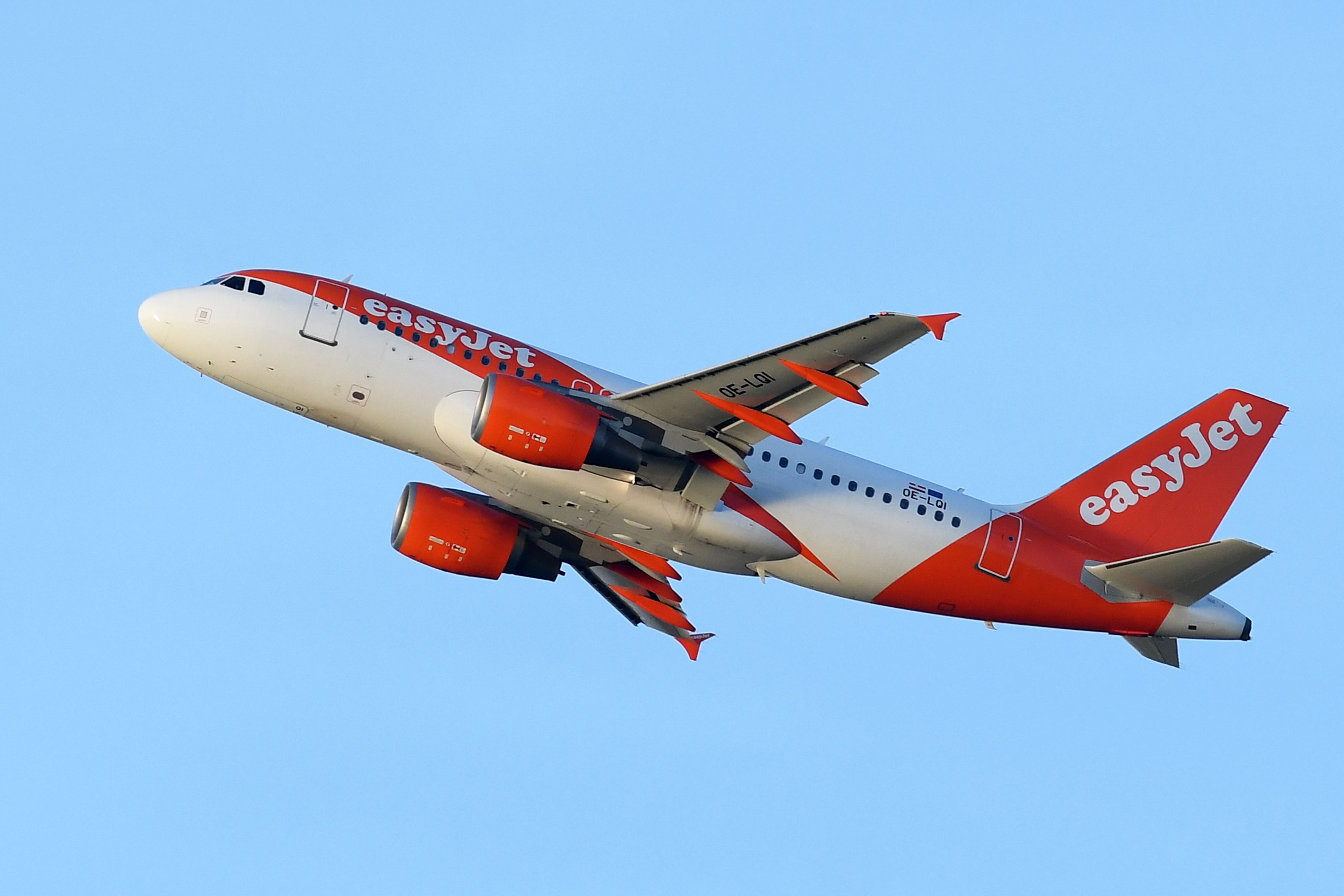EasyJet Accidents: The Untold Stories And What You Need To Know
Let’s be real, folks. When you hear about airline accidents, it’s hard not to get a little nervous. But hold up—let’s talk about EasyJet accidents in a way that doesn’t send you spiraling into panic mode. EasyJet, one of Europe’s biggest budget airlines, has been flying the skies since 1995. Yeah, that’s right—over two decades of getting people from point A to point B. But like any airline, they’ve had their fair share of incidents. So, what’s the deal? Let’s dive in.
You’re probably thinking, “Wait, do I need to rethink my next flight?” Don’t sweat it just yet. Air travel is still one of the safest ways to travel, and EasyJet has a solid track record when it comes to safety. That said, accidents happen, and it’s important to know what’s going on behind the scenes. We’re here to break it down for you, no sugarcoating.
Now, this ain’t just another clickbait article. We’re diving deep into the world of EasyJet accidents, giving you the facts, stats, and real-life stories you need to make informed decisions. Whether you’re a frequent flyer or just planning your first trip, stick around because we’ve got you covered.
What Are EasyJet Accidents?
First things first—what exactly are we talking about when we say “EasyJet accidents”? These are incidents or events involving EasyJet aircraft that may have resulted in damage, injuries, or even fatalities. But before you hit the panic button, let’s clarify something: not all incidents are created equal. Some are minor, like a bird strike or a technical glitch, while others might involve more serious situations like emergency landings or turbulence.
Here’s the kicker—airlines are required to report even the smallest incidents to aviation authorities. Why? Because safety is a top priority, and every little detail matters when it comes to preventing bigger problems down the line. So, when you hear about an EasyJet accident, chances are it’s already been investigated and addressed by the pros.
How Common Are EasyJet Accidents?
Alright, let’s talk numbers. According to official aviation data, EasyJet operates over 1,000 flights per day across Europe. With that kind of volume, you can expect a few bumps along the way. But here’s the thing—most incidents are minor and don’t affect passenger safety. In fact, EasyJet’s accident rate is well below the global average for commercial airlines.
Let’s break it down with some stats:
- Over the past decade, EasyJet has reported fewer than 10 major incidents.
- The vast majority of incidents involve technical issues that are resolved before takeoff.
- Only a small percentage of incidents result in delays or cancellations.
So, while EasyJet accidents do happen, they’re not as common as you might think. And when they do occur, the airline has a solid plan in place to handle them.
Understanding the Causes of EasyJet Accidents
Now, let’s get into the nitty-gritty. What causes EasyJet accidents in the first place? There are a few key factors to consider:
1. Technical Issues
Let’s start with the obvious one—technical problems. Every aircraft is a complex machine, and sometimes things go wrong. From engine failures to hydraulic leaks, these issues can pop up without warning. But here’s the good news—EasyJet has a robust maintenance program that catches most problems before they become serious.
2. Weather Conditions
Weather plays a huge role in aviation safety. Turbulence, thunderstorms, and strong winds can all contribute to incidents. EasyJet pilots are trained to handle these situations, but sometimes Mother Nature throws a curveball that even the best pilots can’t avoid.
3. Human Error
Let’s face it—nobody’s perfect. Pilots, air traffic controllers, and ground crew are all human, and mistakes can happen. But EasyJet invests heavily in training and safety protocols to minimize the risk of human error.
The History of EasyJet Accidents
EasyJet has been around for over 25 years, and during that time, they’ve experienced their fair share of incidents. Here’s a quick rundown of some of the most notable ones:
1. The 2001 Bird Strike
Back in 2001, an EasyJet flight from Geneva to London was forced to make an emergency landing after a bird strike damaged one of its engines. Thankfully, the pilots handled the situation like pros, and all passengers were safe.
2. The 2014 Engine Fire
In 2014, an EasyJet plane experienced an engine fire shortly after takeoff from Geneva. The flight was diverted back to the airport, and all passengers were evacuated safely. Investigations later revealed a technical issue with the engine.
3. The 2019 Turbulence Incident
One of the more recent incidents involved severe turbulence on a flight from Spain to the UK. Several passengers were injured, and the flight had to make an emergency landing. While this was a scary situation, it highlights the importance of wearing your seatbelt during flights.
EasyJet’s Safety Record
So, how does EasyJet stack up against other airlines when it comes to safety? Pretty well, actually. EasyJet adheres to strict safety standards set by the European Union Aviation Safety Agency (EASA) and has a reputation for prioritizing passenger safety.
Here are some key points about EasyJet’s safety record:
- EasyJet has never experienced a fatal accident in its history.
- The airline undergoes regular safety audits and inspections.
- EasyJet pilots and crew are among the most highly trained in the industry.
While no airline is completely immune to incidents, EasyJet’s commitment to safety is second to none.
What Happens After an EasyJet Accident?
So, what happens when an EasyJet accident does occur? The airline has a well-defined protocol for handling incidents, which includes:
1. Immediate Response
EasyJet’s ground crew and emergency services spring into action as soon as an incident is reported. This ensures that passengers and crew are safe and that any necessary repairs are made quickly.
2. Investigation
Every incident is thoroughly investigated by aviation authorities and EasyJet’s internal safety team. This helps identify the cause of the incident and implement measures to prevent similar occurrences in the future.
3. Communication
EasyJet is transparent about incidents and keeps passengers informed every step of the way. They provide updates via their website, social media, and email notifications.
How Safe Is EasyJet Compared to Other Airlines?
When it comes to safety, EasyJet holds its own against other major airlines. In fact, many experts consider EasyJet to be one of the safest budget carriers in Europe. But don’t just take our word for it—here are some stats to back it up:
- EasyJet’s accident rate is 0.05 per million flights, compared to the global average of 0.15.
- The airline has received numerous awards for its safety and operational excellence.
- EasyJet’s aircraft are some of the youngest in the industry, with an average age of just 5 years.
So, if you’re wondering whether EasyJet is safe, the answer is a resounding yes.
Passenger Rights After an EasyJet Accident
Now, let’s talk about what happens if you’re involved in an EasyJet accident. Under EU regulations, passengers have certain rights that protect them in the event of an incident. Here’s what you need to know:
1. Compensation
If your flight is delayed, canceled, or diverted due to an accident, you may be entitled to compensation. EasyJet will provide details on how to claim your compensation, and they’ll handle the process efficiently.
2. Assistance
EasyJet is required to provide assistance to passengers affected by an accident. This includes food, lodging, and transportation if necessary.
3. Support
Passengers involved in serious incidents may receive additional support, such as counseling or medical assistance, depending on the situation.
How to Stay Safe on Your Next EasyJet Flight
While EasyJet accidents are rare, there are still steps you can take to ensure your own safety:
- Always wear your seatbelt, even during smooth flights.
- Pay attention to the safety briefing and familiarize yourself with the emergency exits.
- Follow all instructions from the crew during takeoff, landing, and turbulence.
Remember, safety is a shared responsibility. By staying informed and prepared, you can help ensure a smooth and safe journey.
Final Thoughts
So, there you have it—the lowdown on EasyJet accidents. While incidents do happen, they’re rare, and EasyJet has a solid track record when it comes to safety. Whether you’re flying for business or pleasure, you can rest assured that EasyJet has your back.
Now, here’s the deal—don’t let fear of accidents keep you grounded. Air travel is one of the safest modes of transportation, and EasyJet is committed to keeping it that way. So, book that flight, pack your bags, and get ready for your next adventure.
And hey, if you’ve got any questions or concerns, drop us a comment below. We’d love to hear from you!
Table of Contents
- What Are EasyJet Accidents?
- How Common Are EasyJet Accidents?
- Understanding the Causes of EasyJet Accidents
- The History of EasyJet Accidents
- EasyJet’s Safety Record
- What Happens After an EasyJet Accident?
- How Safe Is EasyJet Compared to Other Airlines?
- Passenger Rights After an EasyJet Accident
- How to Stay Safe on Your Next EasyJet Flight
- Final Thoughts

easyJet Careers Join our team

Story featured image

easyJet Launches Onboard Appeal For Ukraine Relief